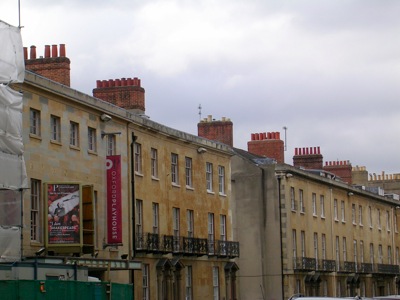Floating @ Oxford Playhouse
Officially this is a story about being both both connected and disconnected from a place but in reality this is a welcome invitation to the audience to be daring and become more comfortable in our own skin. Using method acting, the two actors stem their actions from internal emotions, doing things for real rather than ‘acting’. Sioned Rowlands does 150 breaststrokes in a bowl of water wearing a swimming costume and a bathing hat. This has the effect of seducing the audience into the action because of the intimate bond we feel as fellow collaborators. As Hugh Hughes stresses, he wants to connect with us. He humorously asks theatre critics not to criticise the magical moment when he invites anyone to join him on stage for a dance. There are no takers but he is right in describing a feeling that we could have been on the verge of something special happening.
Running around the theatre, which has the house lights up for most of the evening, Hughes physically shows us the walls of the theatre and leads us through the concept that these walls separate the people who have chosen to be here and those who have not. We have made a choice and Rowlands thanks us for coming. Hugh engages in a surreal flow of experimental stand-up banter as he builds up to yet another engaging moment of what he describes as ‘macro-theatre’. This ‘macro-theatre’ is used in telling the story of an earthquake that shatters the Menai Bridge where a small detail such as a rattling teacup tells the story of a much bigger event. Responses are chosen from the audience that support the drama that is unfolding on stage. Whilst the storyline to be told is already decided, (Hughes has written it on a piece of cardboard), the company approaches its telling in an open devised way. As the now floating Island circumnavigates the globe, Rowlands plays a lisping and listing Headmaster who takes charge of making the island seaworthy. This now literal isolation inspires the Islanders to embrace a pride in their hometown, and in setting this scene in a warehouse similar to the size of the theatre Hughes invites us to declare as the Islanders do, ‘Ynys Mon’, by raising a hand. The pride is so great, all sea-faring vessels are burnt and festivities are organised as the Islanders connect with their Island. But Hughes disconnects and plans escape for which he receives an inept and innocuous punishment that is warming in the way it stems from the passion of the perpetrator for a tight-knit community at all costs. This moment may be familiar to folk who are from villages where the Primary school Head teacher exerts community wide powers. The over-head projector is borrowed from Hughes’ old school, which imbues meaning to the mixed media used. Large screens project childhood events and paraphernalia such as Nan’s wrestling magazine is circulated. This use of memorabilia reveals personal information that creates a strong connection amongst the audience, similar to that seen in some of Tracy Emin’s work. Whilst the Gulf Stream returns one and all homeward bound, at the end of this meditative journey it feels lovely to be in the hands of a Hoipolloi production. Long after the Anglesey stamp has washed off the skin, it is still irresistible to check the maps to see if the Menai Bridge is still standing.

My Blog
Tuesday 11th September 2007

